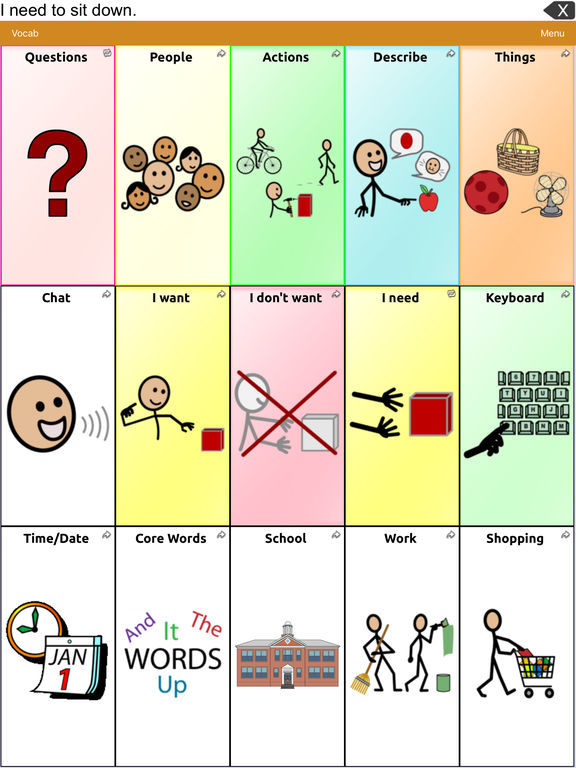

Well, I've been a part of that for a long time too. That there is an "art" if you will, to AAC. There are also those that want it all to be in the hands of the clinician with complicated formulas and a mystery of complex decision making. And there are people that look at it that way, and will tell you that it is just that easy. You have this (insert label/diagnosis here), so you get this (insert name of device/app/printed book here).
Proloquo touch chat professional#
It is so easy for people, whether that is professional staff or family members, to look at AAC as a very medical or clinical science model type of prescribing an item. 1) the overuse or misuse of AAC strategies 2) underestimation of children's communication potential 3) choosing a tool based upon a child's label versus what's needed in that individual child's environment, their unique, natural communication abilities and what is truly needed to be supplemented or augmented through AAC. I look forward to a lively discussion on this topic!īetsy, You and the other responses have hit on so many of the issues/frustrations that I care about so deeply in AAC.


The icons for these two food items were then moved to the front of his book and he received grapes after creating an “I want_” sentence strip. As his frustration became apparent, he was shown the two choices available to him: cheese and grapes. He then asked for goldfish crackers, which were also unavailable. He asked for “sausage” several times, only to be told that it was not available. Recently, I observed a nonverbal student with autism using his PECS book at snack. The latter is usually accomplished with maximum prompting (sometimes hand over hand) by an adult.

I see PECS used primarily for requesting food during snack, and iPad AAC devices used for social communication such as answering questions or sharing personal information. AAC choices are typically limited to the Picture Exchange Communication System (PECS) or a high-tech device, usually consisting of an iPad with a sophisticated communication app such as Proloquo2Go or TouchChat. In the Autism programs I visit across Northern California, I am seeing a critical lack of communication options available to the students. The discussion topic I am submitting for this week is the implementation of Augmentative and Alternative Communication (AAC) tools and strategies in the schools for students with Autism Spectrum Disorders (ASD).


 0 kommentar(er)
0 kommentar(er)
